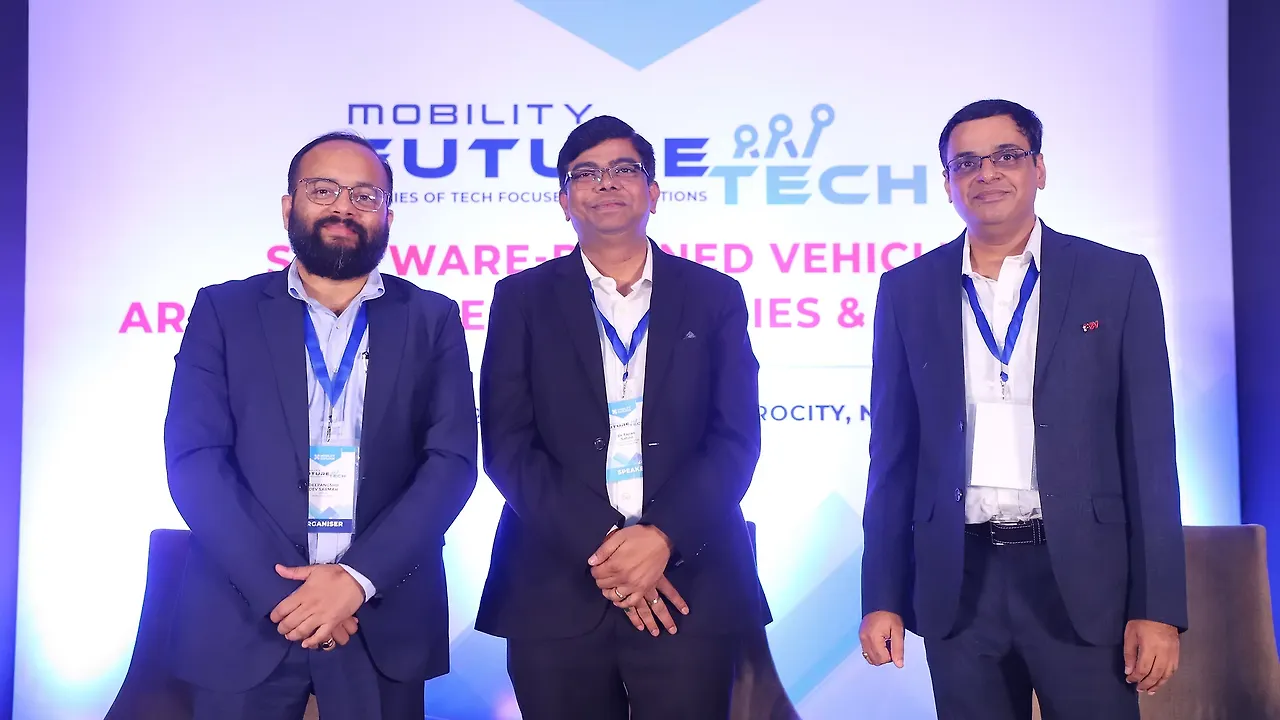
“Upgradability and updatability will be the key to software-defined vehicles,” said Anand Bhange, director, FEV.io, at the Mobility FutureTech organised by Mobility Outlook in Delhi on August 29. He added that designing future automobiles requires continuous updates.
Dr Tapan Sahoo, Executive Director, Maruti Suzuki India, said new features and updates on demand would be the key for SDVs along with middleware. According to him, SDVs are vehicles whose features and functions are primarily enabled through software.
This, in turn, is result of the ongoing transformation of the automobile from a largely hardware-based product to a software-centric electronic device on wheels. Dr Sahoo said while the entry of SDVs in mass market was a still a few years away, the journey had already begun with connectivity.
Bhange said the automobile industry was changing with newer user experience and expectations with software now emerging as a critical part in automobiles. Kaushik Madhavan, VP and Global Head- Consulting Automotive and Transportation, MarketsandMarkets, added that over the next 10-12 years, 60% of the bill of materials cost for vehicles would be taken up by software.
The shift to SDVs is being fuelled worldwide by a host of factors such as climate change, new demographics with younger buyers coming in, rising urbanisation and the growing need for digital technology. Dr Sahoo said greater use of consumer electronics and smart technology was also contributing to growth of SDVs.
Changes and Requirements
According to Bhange, in-vehicle, outside vehicle and connectivity would be combined with cybersecurity and functional safety, thereby becoming the core of the technology in SDVs. A whole lot of learnings form the IT industry would also be integrated into the automotive industry.
Consequently, a large chunk of the development will happen on the software side while hardware components will be common across models. Furthermore, increase in C++ and objective-based development would happen along with virtualisation in the development stage for vehicles.
Bhange said a reorganisation from Tier 1 suppliers and OEMs would happen with SDVs coming in a big way. Dr Sahoo added that a collaborative effort between these two segments was also needed.
In the case of India, he said SDVs would pave the way for affordable, cleaner and safer automobiles. While there was a dramatic shift in powertrain technologies now happening, a tech-agnostic approach would help the industry transform while catering to customer needs.
Alongside, while connectivity will be the key to SDVs, India as a nation should focus on improving real time connectivity for connected vehicles especially in tier 2 and tier 3 cities.
Also Read